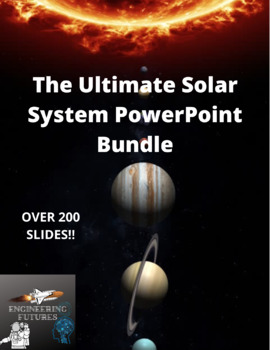The Ultimate Solar System PowerPoint Bundle
- Zip
Products in this Bundle (9)
showing 1-5 of 9 products
Bonus
Description
This is the Ultimate Solar System PowerPoint Bundle. This bundle includes 8 amazing PowerPoints that will teach your students about every planet in our Solar System! There are over 200 slides in this bundle!! This is the perfect tool for teaching your students about the wonders of our Solar System. Each PowerPoint has been created with amazing HD images, Accurate Facts, Video Links, Gifs, and much more!!
AS A BONUS I HAVE THROWN IN MY SCALE OF THE SOLAR SYSTEM EXCEL SHEET! ALL YOU NEED TO DO IS INPUT THE SIZE OF YOUR MODEL SUN AND THE SHEET WILL DO ALL THE MATH FOR YOU!!!!
ENJOY!!!
* FOR FREE PHYSICS TUTORIALS, PLEASE SUBSCRIBE TO MY YOUTUBE CHANNEL*
**Note, this is PowerPoint was originally created on Google Slides. Some of the images/fonts might need to be re-arranged due to the reformatting.*


